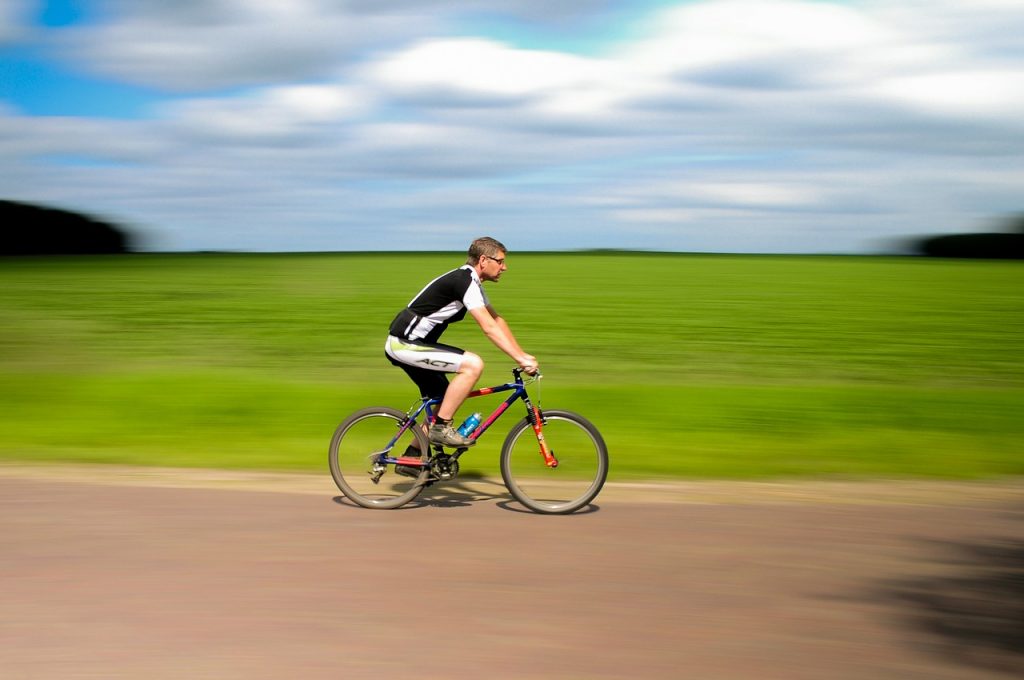Rheumatological and musculoskeletal symptoms (RMS) are a main cause of chronic pain in people with type 2 diabetes mellitus (T2D). Some RMS, such as limited joint mobility syndrome (diabetic cheiroarthropathy), neuropathic arthritis, tendinopathy, diabetic amyotrophy, and diabetic muscle infarction, are considered specific complications of T2D. For other RMS, including osteoarthritis, low back pain, carpal tunnel syndrome, gout, adhesive capsulitis of the shoulder (frozen shoulder), diffuse idiopathic skeletal hyperostosis (DISH), and widespread chronic pain, T2D is considered a predisposing condition (1, 2).
Shared risk factors between T2D and RMS are thought to influence high comorbidity. These include hypertension, hyperlipidemia, inactive lifestyle, older age, and obesity. More than 90% of people with diabetes are overweight or obese, which greatly increases the risk of developing conditions associated with chronic pain (3). Indeed, irrespective of diabetes, a large-scale survey of over 1 million people in the USA demonstrated that chronic pain increases linearly with BMI: compared with people with normal weight (BMI < 25), the rate of recurring pain was increased 20% in overweight people (BMI 25-<30), 68% in people with class I obesity (BMI 30-<35), 136% in people with class II obesity (BMI 35-<40), and 254% in people with morbid obesity (BMI ≥40) (4).

The pain associated with RMS can make it difficult or painful to exercise; this leads to sedentarism, which exacerbates the problem. Not surprisingly, RMS and chronic pain in T2D can be also promoted by psychosocial factors such as depression, fear of injury, and impaired quality of life (5).
Regular exercise may prevent or delay the development of T2D, and is the key lifestyle strategy recommended for weight loss and control of glucose blood levels in those affected. But can exercise effectively alleviate RMS-related chronic pain in people with T2D?
Regular exercise may prevent or delay the development of T2D, and is the key lifestyle strategy recommended for weight loss and control of glucose blood levels in those affected. Share on XTreating RMS with Exercise in Type 2 Diabetes: What Helps and What Doesn’t?
Exercise and diet modification are initially advised before medication initiation for T2D management. Many studies demonstrated that exercise provides clear benefits to people with diabetes, by improving insulin sensitivity and preventing diabetes-related complications (6). There is however much less evidence available for the risk vs benefit of exercise interventions for chronic pain related to RMS in T2D.
In a recent article published in Current Reviews in Diabetes, investigators in Australia reviewed the impact of diverse exercise regimens on RMS in people with T2D (5).
The authors caution that most studies addressing the efficacy of exercise on diabetic symptoms usually exclude potential participants based on the presence of RMS, and that’s why adverse effects may be underestimated.
Nevertheless, the few studies available suggest that exercise does improve RMS symptoms in diabetic patients, although adverse events occur in some cases, depending on exercise modality, frequency, and intensity:
Low to moderate aerobic exercise. A systematic review recently published in Diabetes/metabolism Research and Reviews that evaluated 11 studies concluded that aerobic exercise is well tolerated and may improve nerve function and reduce neuropathy-related symptoms in people with T2D, with minimal adverse events (7). Although not focused on T2D, several studies also showed that weight reduction, a key benefit of aerobic exercise, reduces joint load and can provide relief from osteoarthritic pain (8, 9).
Strength Training. Although investigations on the effects of strength training on diabetic RMS are lacking, evidence that it helped T2D patients improve glycemic control and muscle function has been presented (10, 11).
Resistance training. Like strength training, resistance training can help build muscle mass and strengthen soft tissues. Resistance training however is more low-impact, uses the body’s own weight, and because it’s gentler on the joints is often preferred to manage joint problems. A Diabetes Therapy report on 8 published studies concluded that resistance training, especially of high intensity, may improve glycemic control and muscle strength in elderly T2D patients (12).
Flexibility training. Improving range of motion and decreasing stiffness are the main benefits of flexibility training. Low intensity activities like yoga and Tai Chi combine flexibility, balance, resistance, and endurance, and have shown to improve metabolic function, reduce pain interference, and increase limb strength and balance in T2D patients (13, 14). Both are also good therapies to reduce stress, anxiety, fear of movement and pain cognitions, thus helping overcome mental barriers to exercise.
Combined exercise training. Evidence shows that multisensory exercise (an approach that evokes the stimulation and use of various senses) and functional programs combining balance and strength training can improve gait speed and balance and increase muscle strength and joint mobility in patients with diabetic peripheral neuropathy (6).

A clinical trial in T2D showed that a combined regimen that included progressive balance, flexibility, strengthening, and aerobic exercise improved walking ability when it was conducted standing and walking (weight-bearing exercise; WB) rather than sitting or lying (non-weight-bearing exercise; NWB). While this outcome was perhaps predictable, glycated hemoglobin levels (a measure of the amount of blood glucose attached to hemoglobin) were reduced only in the NWB group. Because this group spent more time than the WB group exercising, it was proposed that the volume of exercise (rather than the intensity) accounted for this improvement. Predictably too, the NWB group reported fewer complaints of lower extremity musculoskeletal pain during exercise sessions (15).
In a recent position statement, the American Diabetes Association provides concise exercise training recommendations for exercise class (aerobic, resistance, and flexibility and balance), intensity, duration, frequency, and progression. These new guidelines emphasize the “inclusion of flexibility exercise to improve range of motion around joints in individuals of all ages and balance activities to improve gait and prevent falls in older adults” (16).
Dr. Tatta’s simple and effective pain assessment tools. Quickly and easily assess pain so you can develop actionable solutions in less time.
Exercise Caution With Exercise
While regular exercise offers clear benefits for chronic pain, too strenuous and high-load exercise can instead aggravate musculoskeletal symptoms in people with T2D. The literature offers some examples of adverse effects caused by intensive exercise interventions for T2D:
- Clinical trial results published in JAMA showed that 50% of the T2D patients randomized to an intensive lifestyle intervention (5 to 6 weekly aerobic training sessions of which 2-3 included resistance training) experienced adverse events (most commonly musculoskeletal pain or discomfort and mild hypoglycemia) compared to just 14% of those that received only standard care (medical counseling, education in type 2 diabetes, and lifestyle advice). Moreover, 1 in 5 participants in the exercise intervention group (and none in the control group) reported RMS or discomfort that prevented them from exercising for 7 or more consecutive days (17).
- In a Diabetologia study that assigned 92 T2D patients to 12-months of endurance interval training that included either brisk walking (three 60-min sessions per week) or a medical fitness program (exercise on a home trainer, elliptical trainer or rowing ergometer 3 times a week), 45% and 30% of participants in each group dropped the study after 6 months. At 12 months, the dropout rate increased to 63% and 56%, respectively, with orthopaedic-related comorbidities, such as overuse injuries and/or subclinical osteoarthritis of the lower extremities as the main reason for dropout in ~50% of the cases (18).

RMS in Diabetes, a Challenge for Physical Therapists
As the rates of obesity and diabetes continue to rise, knowledge of the exercise modalities best suited to specific musculoskeletal problems in the T2D population is essential in Physical Therapy practice. Of importance also is knowing which assessment tools are more appropriate for initial evaluation and treatment follow-up. Unfortunately, no specific questionnaires are available that capture the range of symptoms experienced by people with T2D. The Nordic Musculoskeletal Questionnaire is a useful instrument that addresses the prevalence of musculoskeletal symptoms throughout the body, but does not evaluate their impact on function. A combination of this and other self-report measures such as the BPI, SF-12, and NTSS-6 is suggested to assess more thoroughly the burden of RMS and chronic pain in T2D patients.
HOW TO TREAT NEUROPATHY AND NEUROPATHIC PAIN USING NUTRITION
REFERENCES
1- Serban, A. L., & Udrea, G. F. (2012). Rheumatic manifestations in diabetic patients. Journal of medicine and life, 5(3), 252–257.
2- Sözen, T., Başaran, N. Ç., Tınazlı, M., & Özışık, L. (2018). Musculoskeletal problems in diabetes mellitus. European journal of rheumatology, 5(4), 258–265. doi:10.5152/eurjrheum.2018.18044
3- Okifuji, A., & Hare, B. D. (2015). The association between chronic pain and obesity. Journal of pain research, 8, 399–408. doi:10.2147/JPR.S55598
4- Stone, A. A., & Broderick, J. E. (2012). Obesity and pain are associated in the United States. Obesity, 20(7), 1491-1495.
5- Cox, E. R., Coombes, J. S., Keating, S. E., Burton, N. W., and Coombes, B. K. (2019) Not a Painless Condition: Rheumatological and Musculoskeletal Symptoms in Type 2 Diabetes, and the Implications for Exercise Participation. Current Diabetes Reviews, 15. doi:10.2174/1573399815666190531083504
6- Gelaw, A. Y. (2018). Exercise and Diabetes Mellitus. Diabetes Food Plan, 167.
7- Gu, Y., Dennis, S. M., Kiernan, M. C., & Harmer, A. R. (2019). Aerobic exercise training may improve nerve function in type 2 diabetes and pre‐diabetes: A systematic review. Diabetes/metabolism research and reviews, 35(2), e3099.
8- Messier, S. P., Gutekunst, D. J., Davis, C., & DeVita, P. (2005). Weight loss reduces knee‐joint loads in overweight and obese older adults with knee osteoarthritis. Arthritis & Rheumatism, 52(7), 2026-2032.
9- Aaboe, J., Bliddal, H., Messier, S. P., Alkjaer, T., & Henriksen, M. (2011). Effects of an intensive weight loss program on knee joint loading in obese adults with knee osteoarthritis. Osteoarthritis and Cartilage, 19(7), 822-828.
10- Cauza, E., Hanusch-Enserer, U., Strasser, B., Ludvik, B., Metz-Schimmerl, S., Pacini, G., … & Dunky, A. (2005). The relative benefits of endurance and strength training on the metabolic factors and muscle function of people with type 2 diabetes mellitus. Archives of physical medicine and rehabilitation, 86(8), 1527-1533.
11- Brooks, N., Layne, J. E., Gordon, P. L., Roubenoff, R., Nelson, M. E., & Castaneda-Sceppa, C. (2007). Strength training improves muscle quality and insulin sensitivity in Hispanic older adults with type 2 diabetes. International journal of medical sciences, 4(1), 19.
12- Lee, J., Kim, D., & Kim, C. (2017). Resistance training for glycemic control, muscular strength, and lean body mass in old type 2 diabetic patients: a meta-analysis. Diabetes Therapy, 8(3), 459-473.
13- Schmid, A. A., Atler, K. E., Malcolm, M. P., Grimm, L. A., Klinedinst, T. C., Marchant, D. R., … & Portz, J. D. (2018). Yoga improves quality of life and fall risk-factors in a sample of people with chronic pain and Type 2 Diabetes. Complementary therapies in clinical practice, 31, 369-373.
14- Ahn, S., & Song, R. (2012). Effects of tai chi exercise on glucose control, neuropathy scores, balance, and quality of life in patients with type 2 diabetes and neuropathy. The Journal of Alternative and Complementary Medicine, 18(12), 1172-1178.
15- Mueller, M. J., Tuttle, L. J., LeMaster, J. W., Strube, M. J., McGill, J. B., Hastings, M. K., & Sinacore, D. R. (2013). Weight-bearing versus nonweight-bearing exercise for persons with diabetes and peripheral neuropathy: a randomized controlled trial. Archives of physical medicine and rehabilitation, 94(5), 829-838.
16- Colberg, S. R. (2017). Key points from the updated guidelines on exercise and diabetes. Frontiers in endocrinology, 8, 33.
17- Johansen, M. Y., MacDonald, C. S., Hansen, K. B., Karstoft, K., Christensen, R., Pedersen, M., … Ried-Larsen, M. (2017). Effect of an Intensive Lifestyle Intervention on Glycemic Control in Patients With Type 2 Diabetes: A Randomized Clinical Trial. JAMA, 318(7), 637–646. doi:10.1001/jama.2017.10169
18- Praet, S. F., van Rooij, E. S., Wijtvliet, A., Boonman-de Winter, L. J., Enneking, T., Kuipers, H., … van Loon, L. J. (2008). Brisk walking compared with an individualised medical fitness programme for patients with type 2 diabetes: a randomised controlled trial. Diabetologia, 51(5), 736–746. doi:10.1007/s00125-008-0950-y



